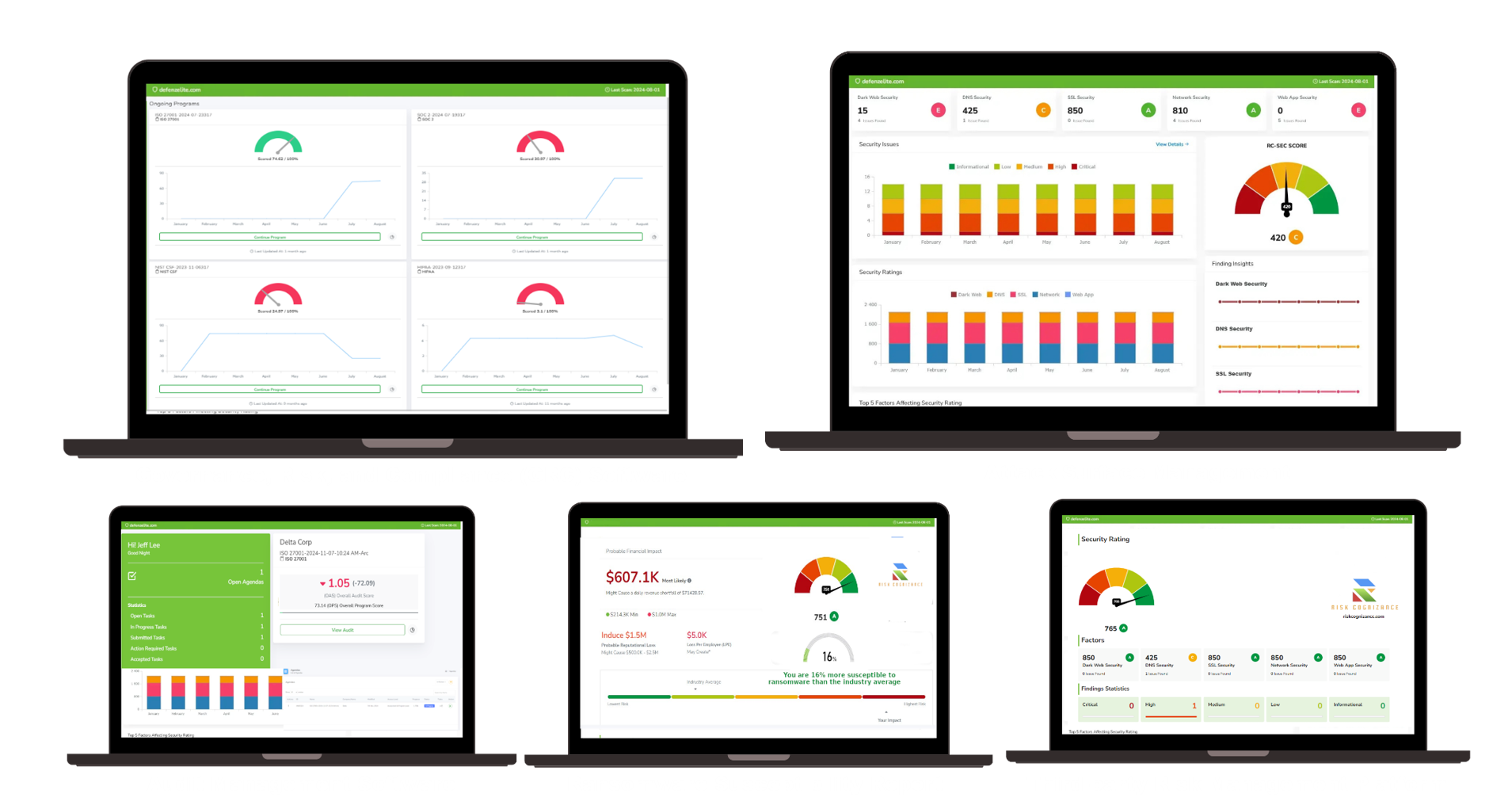6 Key Steps in Developing Compliance Strategy
Understanding Compliance Strategy
Compliance strategy is the foundation of an organization’s ability to adhere to regulatory, legal, and corporate governance requirements. A well-structured compliance strategy ensures security, accountability, and operational efficiency. Risk Cognizance provides an easy-to-use automated compliance solution that streamlines the process, making compliance reporting seamless.
Step 1: Identifying Regulatory Requirements
Every organization must first identify applicable regulatory frameworks such as:
- NIST 800-53: Guidelines for information security controls.
- ISO 27001: Standards for information security management.
- HIPAA: Compliance for healthcare organizations. Risk Cognizance simplifies this step with built-in templates that align with these frameworks, ensuring accuracy and efficiency.
Step 2: Conducting a Compliance Risk Assessment
A thorough risk assessment evaluates potential vulnerabilities and compliance gaps. Organizations can use Risk Cognizance to automate risk assessments, providing real-time insights into compliance status.
Step 3: Implementing Policies and Controls
Policies and controls are essential for maintaining compliance. Risk Cognizance helps organizations:
- Establish predefined policy templates.
- Automate policy enforcement.
- Track adherence to policies over time.


Step 4: Training and Awareness Programs
Employees play a crucial role in compliance. Risk Cognizance integrates training modules that:
- Ensure employees understand compliance obligations.
- Provide continuous monitoring of training progress.
Step 5: Continuous Monitoring and Auditing
Regular compliance audits are necessary to detect and mitigate risks. Risk Cognizance automates log collection and analysis, helping organizations:
- Identify compliance gaps.
- Generate real-time compliance reports.
Step 6: Reporting and Documentation
Generating compliance reports ensures transparency and accountability. Risk Cognizance’s automated reporting tools:
- Provide customizable templates.
- Enable real-time compliance tracking.
Support Frameworks
Risk Cognizance supports multiple compliance frameworks, including:
- CIS Controls
- SOC 2 Compliance
- GDPR
Use Cases
- Financial Institutions: Automating compliance with banking regulations.
- Healthcare Providers: Ensuring HIPAA compliance effortlessly.
- Retail and E-commerce: Strengthening data privacy policies.
Case Studies
Case Study 1: Healthcare Compliance Automation
A large healthcare provider utilized Risk Cognizance to meet HIPAA compliance requirements. The automated compliance platform reduced audit preparation time by 50% and enhanced security monitoring.
Case Study 2: Financial Industry Compliance Monitoring
A multinational financial institution integrated Risk Cognizance for real-time compliance tracking, reducing manual efforts and improving regulatory adherence.
By leveraging Risk Cognizance’s user-friendly compliance solution, organizations can efficiently develop and maintain a robust compliance strategy while minimizing risks and maximizing operational efficiency.

.jpeg)
